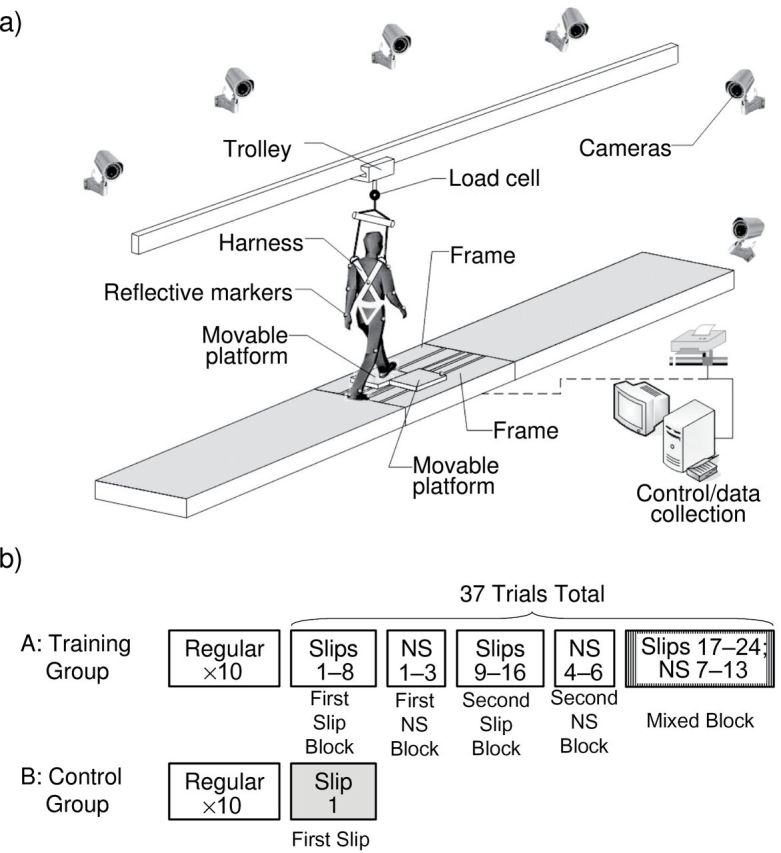Figure 1.

(a) Schematics of the experimental setup used to induce an unannounced slip in the person traversing the walkway. A slip is induced by releasing two low-friction movable platforms embedded in the middle of this 7-m walkway. Each of the two moveable platforms is mounted to the walkway base frame with four low-friction linear bearings. The base frame is bolted to two force plates (not shown) that are used to measure ground reaction force; each platform is unlocked electronically after the force plates detect the landing of the corresponding foot. All participants wore a safety harness adjusted to prevent any part of the body (other than the feet) to come in contact with the ground. (b) The protocol of the initial session for (A) the training group and (B) the control group. Participants were never told the forthcoming trial condition; rather, they were only informed that a slip “may or may not occur.” To make the timing of the novel slip trial difficult to anticipate, the first 10 trials for everyone was unperturbed (regular) trials in which the low-friction platforms were firmly locked in place. The training group then experienced a total of 24 slips delivered in a block-and-mixed fashion. Two blocks of eight slip trials are shown in gray, intervening two blocks of three nonslip (NS) trials in white, and a final block of mixed eight slip and six nonslip trials in vertical lines. The control group only experienced the novel (single) slip.
